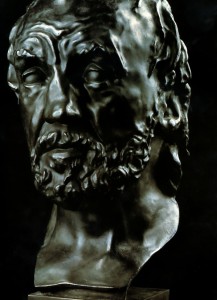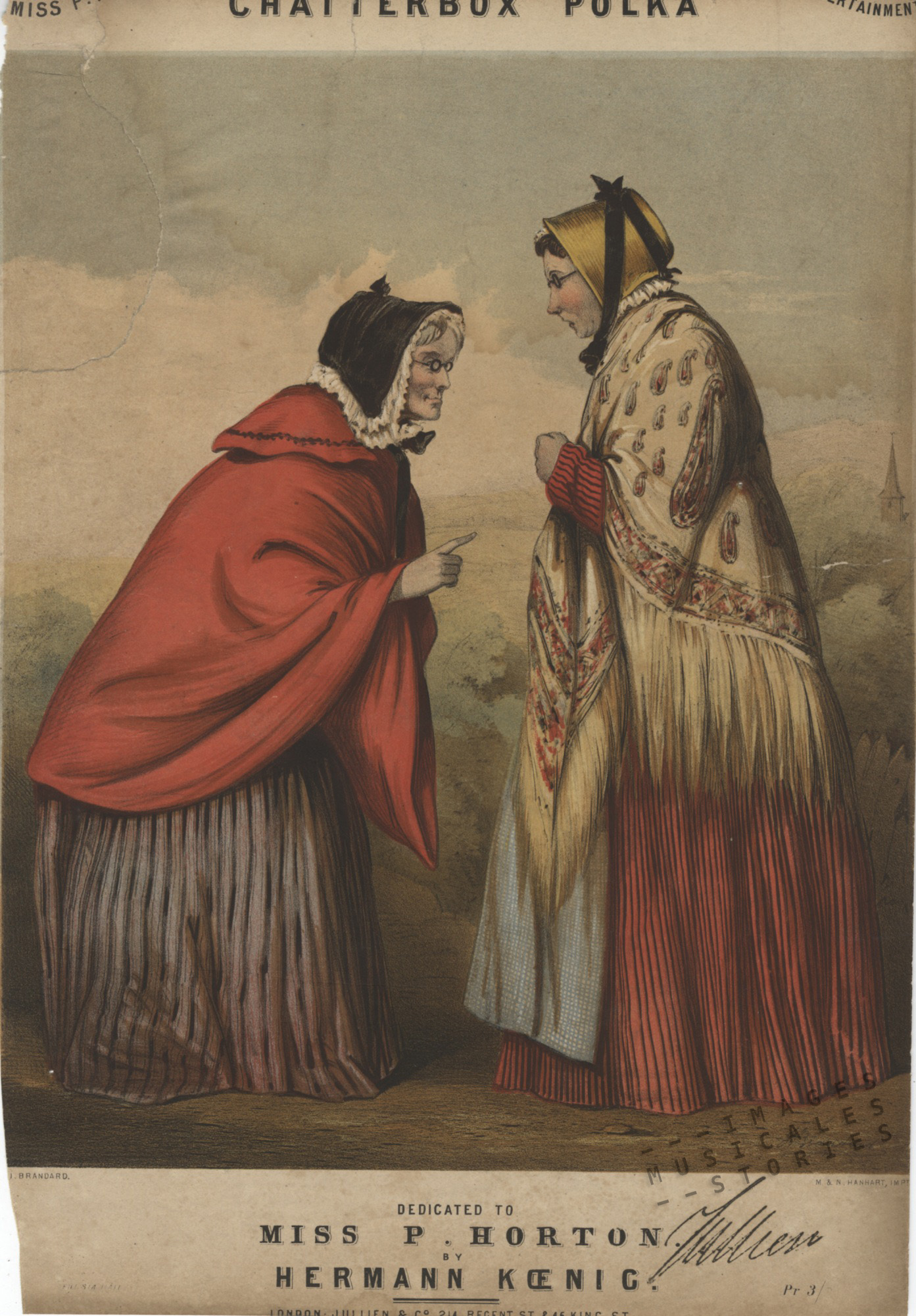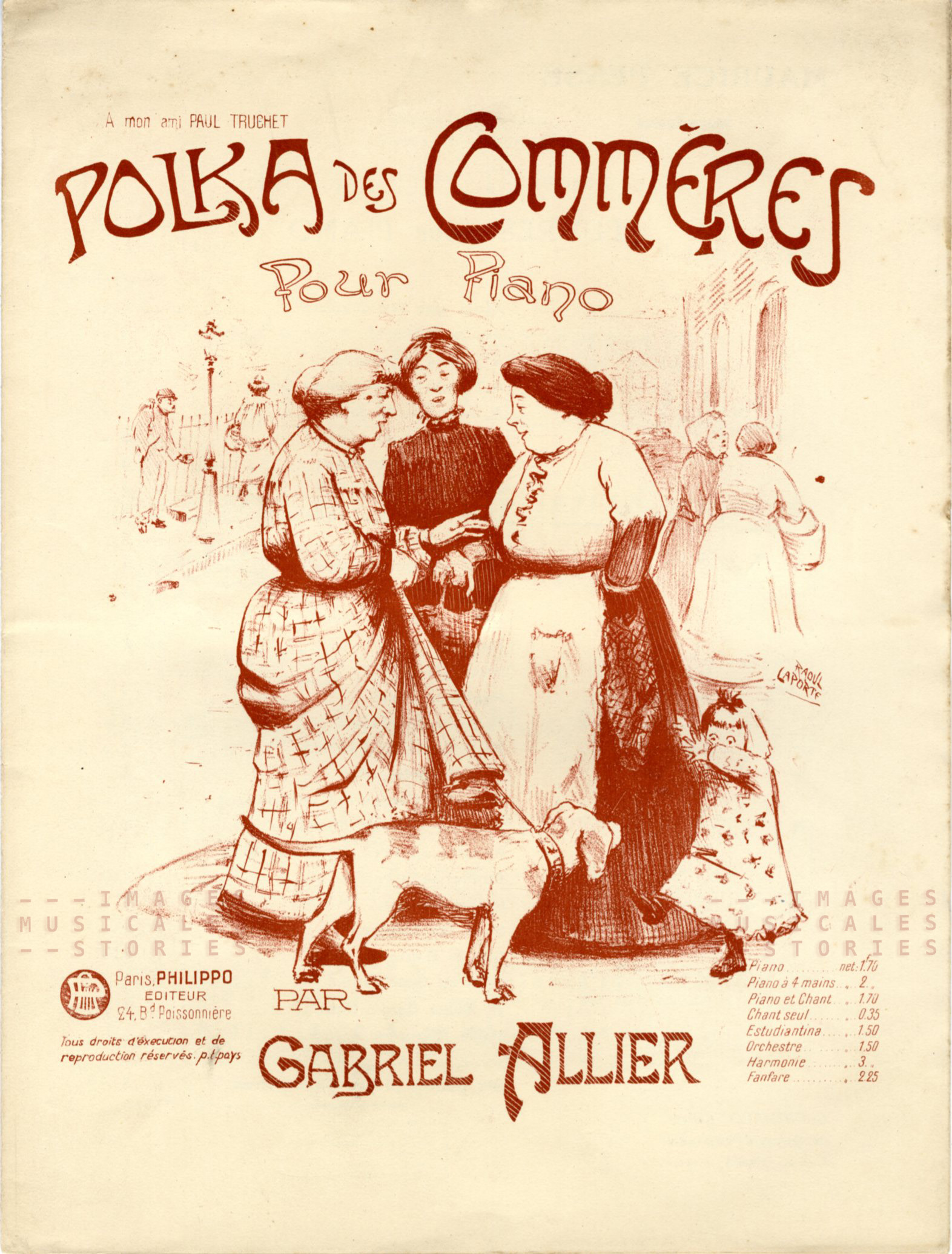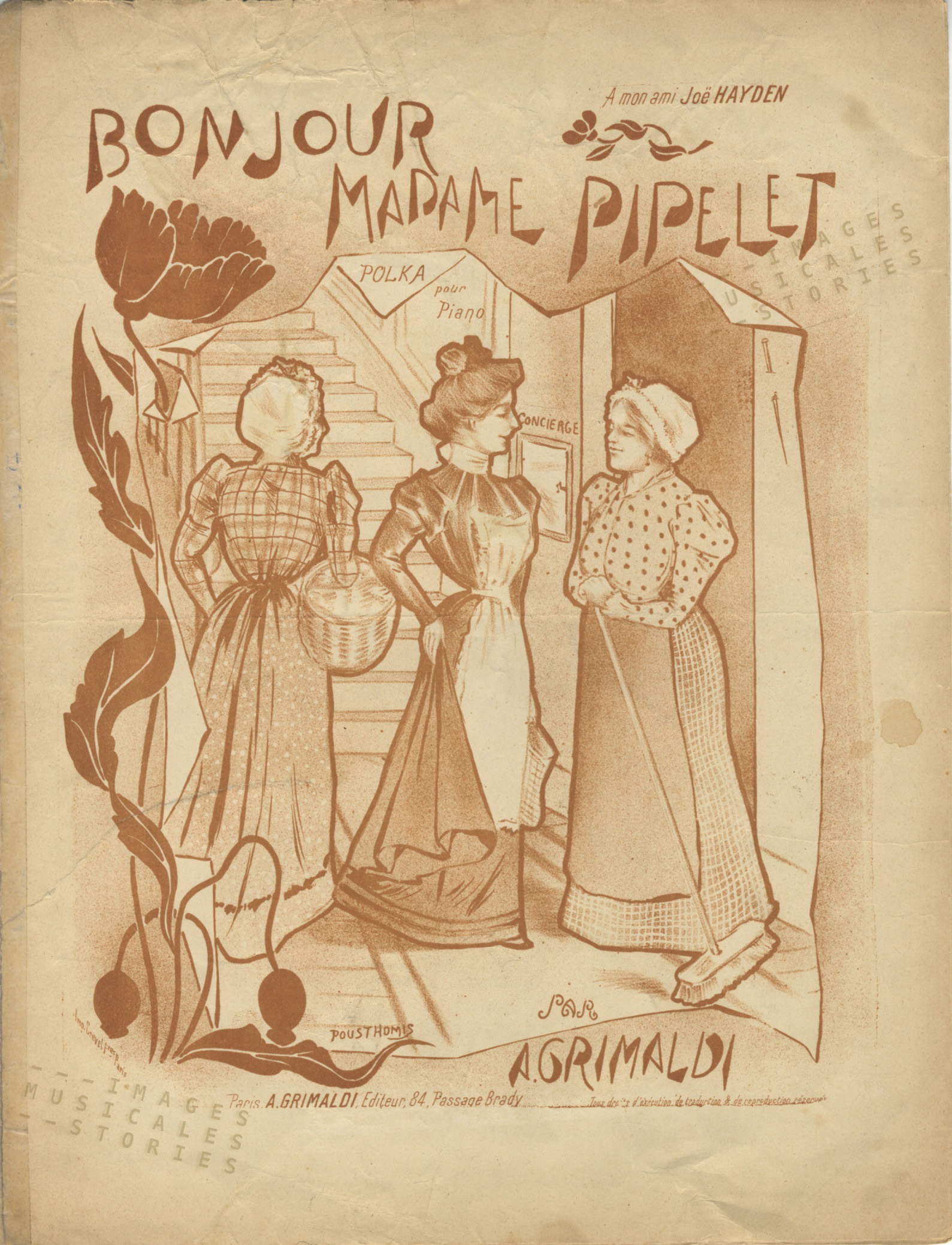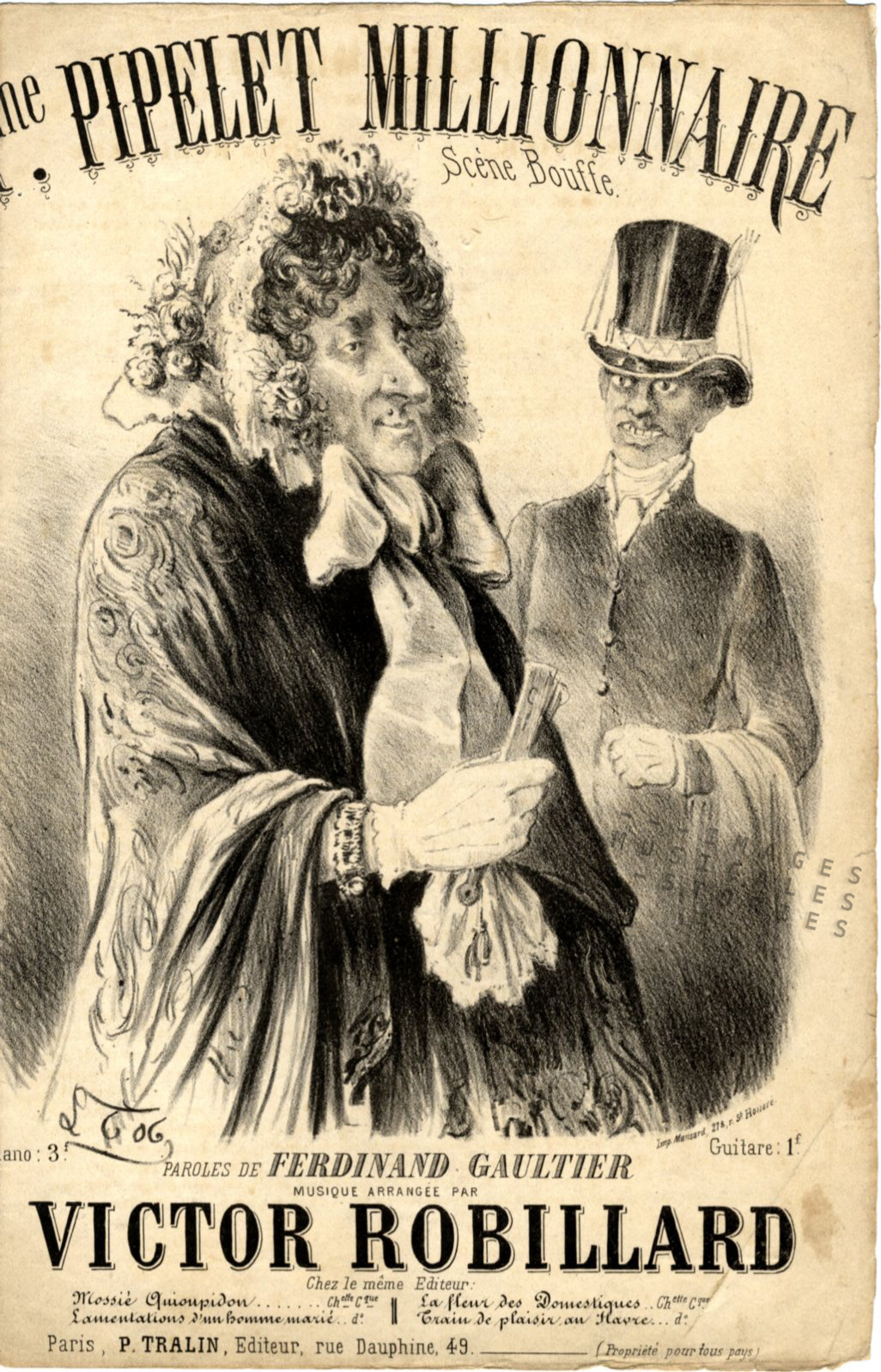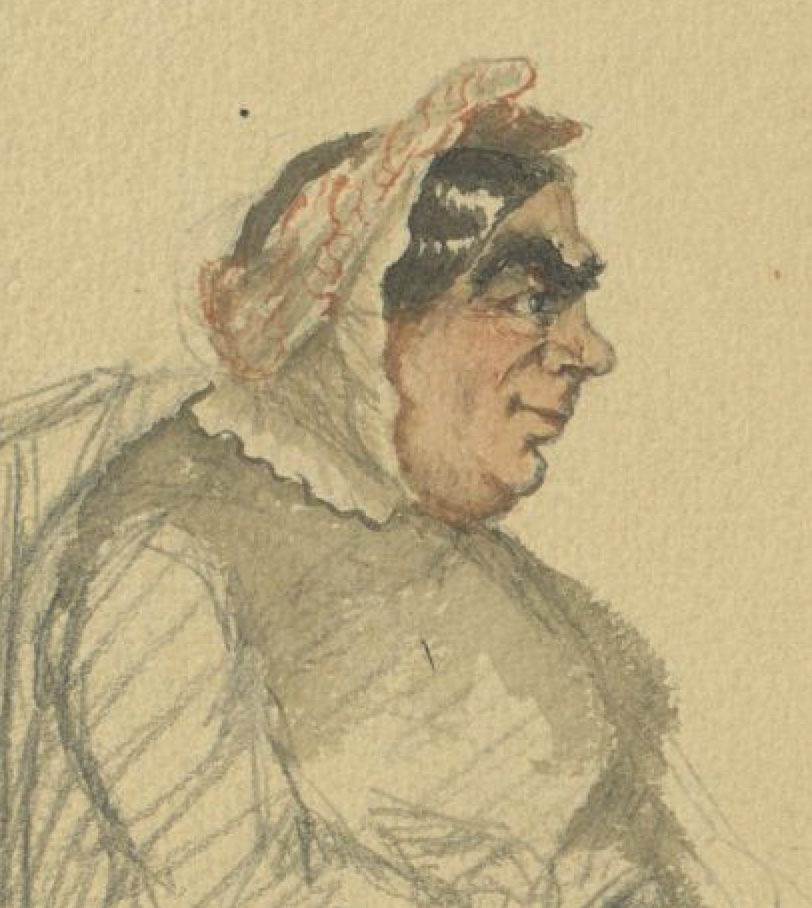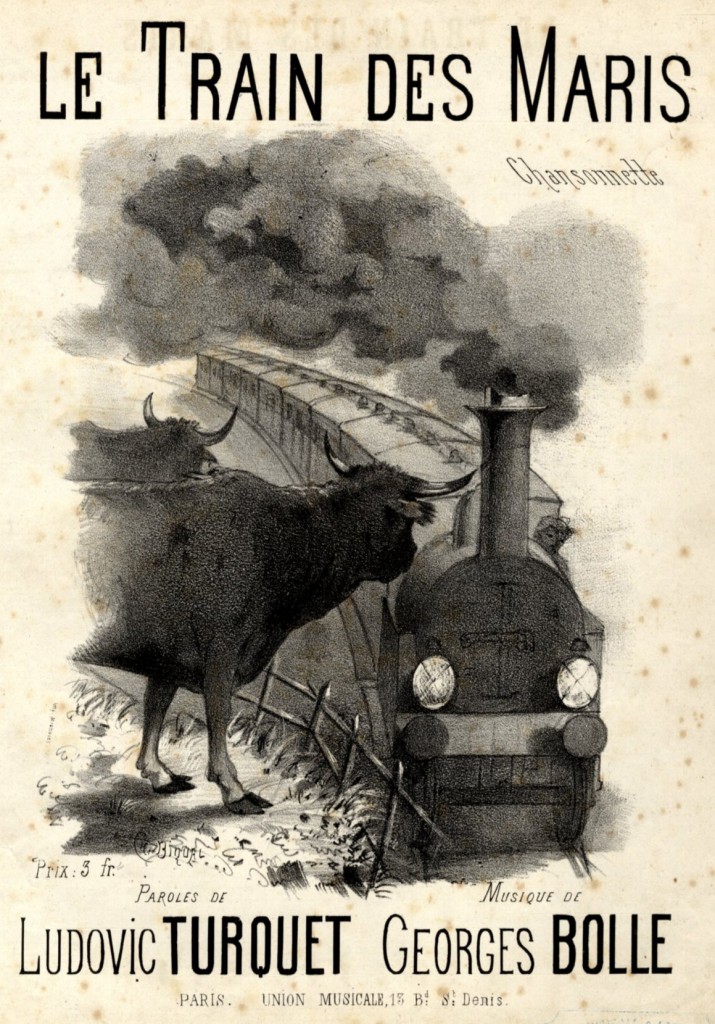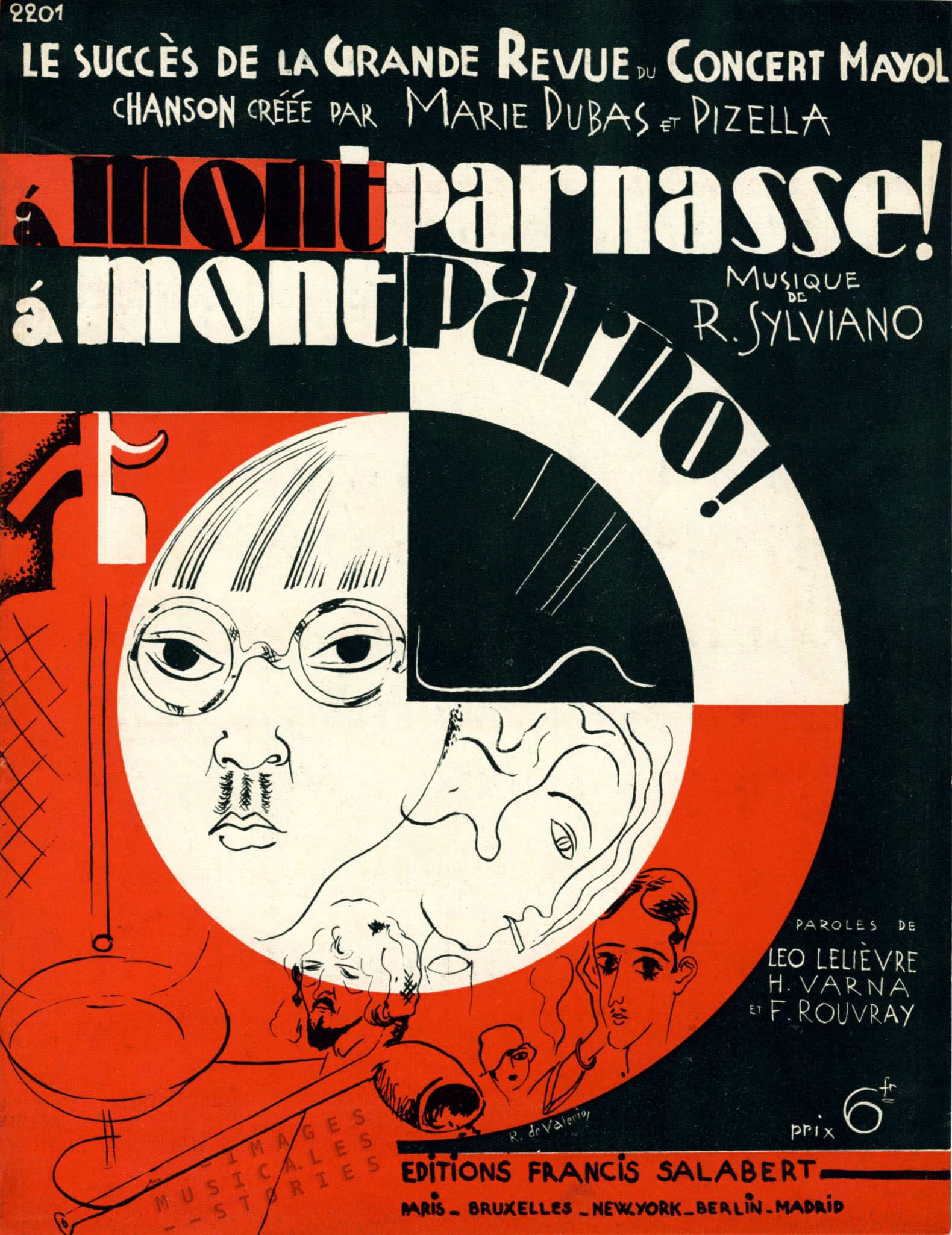
For this song about Montparnasse the French illustrator Roger de Valerio sketched a portrait of the person who was the quintessence of Montparnassian nightlife in the Twenties: the Japanese painter Foujita. He was a hipster avant la lettre, tatooed, with earrings and easily recognisable by his tortoiseshell glasses and straight fringe. Foufou, as he was referred to, was an eccentric who made his own clothes and sometimes adorned his haircut with a lampshade claiming it was his national headdress.

Foujita was a womanizer and according to the song performed by Marie Dubas and Pizella, women flocked to the Montparnasse bars (La Rotonde, Le Dôme, La Coupole) to admire Foufou’s two rings and his brush stroke.
A Montparnasse! A Montparno!
Tout’s les femm’s ont l’coeur qui bat
Pour l’étrange Foujita
A Montparnasse! A Montparno!
Ell’s admir’nt sa tignasse
Ses deux p’tits anneaux
Ell’s veul’nt tout’s, c’est rigolo
Connaître son coup d’pinceau
A Montparnasse! A Montparno!
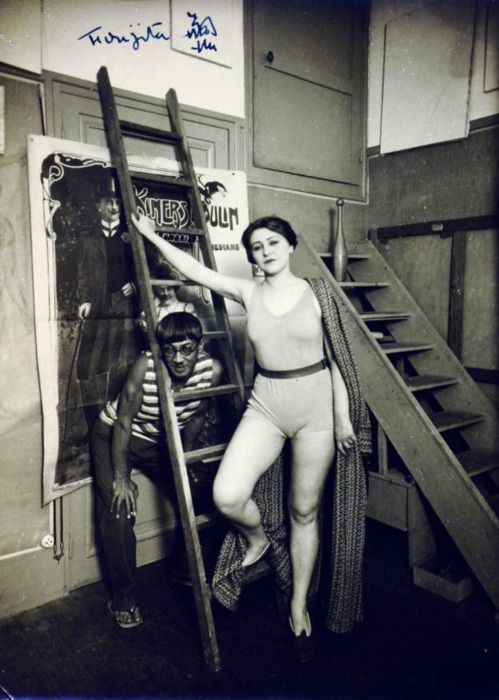
The smoking woman on the sheet music cover next to Foujita, is probably Youki (Lucie Badoud) with whom Foujita was married at that time (1929). But Youki already had a love interest in the poet Robert Desnos, her later husband. Foujita, who was broadminded and aware of his wife’s relationship with Desnos, tattooed a mermaid on Youki’s thigh and a bear on Desnos’ arm to strengthen their connection. Roger De Valerio, being a good friend of Robert Desnos, must have frequented the same crowd and probably knew Foujita. De Valerio was the most prolific illustrator of sheet music in France, but still nothing can be found about his life. We intend to make amends to this scandalous lack in our following posts…
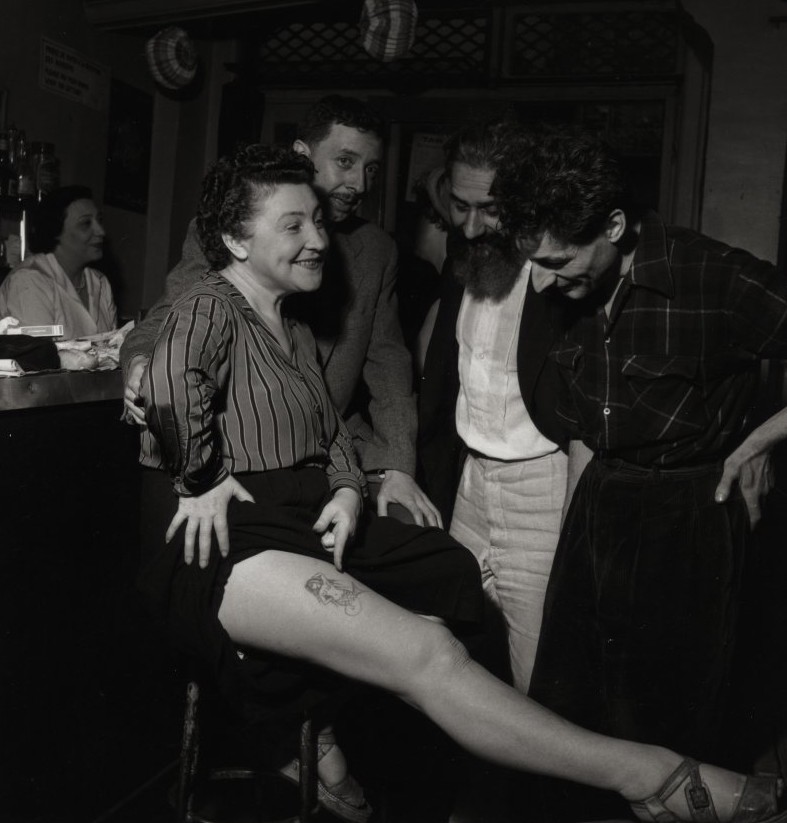
Montparnasse was the heart of intellectual and artistic life in Paris during the 1920s and 1930s. If Kiki de Montparnasse was the queen, Foujita was the king amidst the countless writers, artists and personalities frequenting the bohemian Left Bank. I scanned the net for contemporary documentary films of Montparnasse. I found two and of course Foujita makes his cameo appearance in both.
The first is an experimental short film by Eugene Deslaw dated 1929. At around 12:30 you get a glimpse of the car (a Ballot) that was a birthday present to Foufou’s 21-year-old bride Youki. The camera zooms in on the bronze miniature of Rodin’s Man with a Broken Nose, fixed on the hood. Then appears Foujita smoking a cigarette.
The second film is a short documentary. At around 0:54 Foujita is announced as a ‘well-known painter of women‘. We see him walking down a Montparnasse street in kimono, and later at work: smoking while he draws a portrait of Kiki de Montparnasse.
